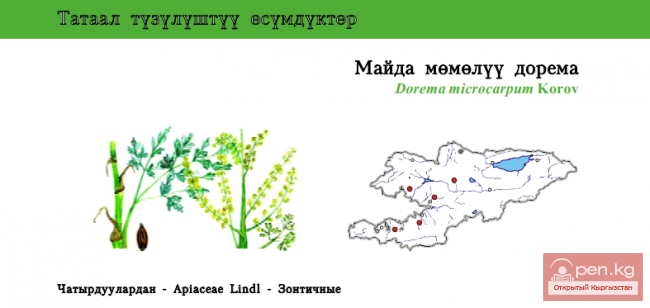Culture of Southwestern Fergana
In the southwestern foothills of Fergana, a multi-sector economy developed in the first half of the 1st millennium AD, largely due to the natural features of the region.
There was an organic connection between the pastoral and agricultural populations, which determined the development of the area. There was a constant exchange of experience and economic skills, which ultimately led to the creation of a complex economy. Agriculture occupied a significant place in economic activity. Apparently, wheat and millet were sown. A large number of tools related to agriculture and the processing of agricultural products were found at the estate - hoes, sickles, garden knives, millstones, and grain grinders. The latter were also found at the burial site near the entrance to the catacomb.
According to reports from ancient authors, Fergana was rich in iron, gold, and cinnabar. In the famous Kan-i-Gut cave, iron and silver mining began as early as the first centuries AD. The mining industry was closely related to metalworking and jewelry production. Even in the early Middle Ages, some specialization in metalworking crafts began to emerge. Centers producing weapons and various decorative items were distinguished.
Tools for everyday work were made everywhere. In Kayragach, during excavations of structures from the upper construction horizon, pieces of iron slag and melted bronze items were found. In the sanctuary, a small iron anvil was discovered - rectangular in cross-section, slightly narrowing towards the bottom, with a working surface that is slightly worn and small in area; apparently, small items were made on this anvil. Anvils are among the rare finds. Besides Kayragach, they are only known from Penjikent (Belenitsky, 1954; Bolshakov, Negmatov, 1968; Raspopova, 1969).
The main source for studying pottery crafts is its products - ceramics. Judging by the ceramic finds, a significant place in it belonged to domestic production (all kitchen vessels, large jugs, and pots were hand-shaped). At the same time, exquisite thin-walled dishes, jugs, and pots were formed on a foot-powered potter's wheel with a stand. Analysis of ceramic products showed that a significant part was made for the market. This was expressed in the standardization of pottery products. Vessels of the same shape, the same proportions, decorated with the same ornament were produced over a vast territory.
Among other crafts, weaving should be noted. Khoi Chao wrote about the production of cotton fabric called debu. Fabrics are among the rare finds, so weaving can often only be judged by indirect data. The few fabric finds come from the Isfarin mounds and the Karabulak burial site.
In the Karabulak burial site, silk fabric brought from China was found in one of the mounds (Baruzdin, 1961, p. 65).
Apparently, woolen and silk fabrics were also in use. Silk weaving, borrowed from China in the first centuries AD, quickly spread in Sogd and other regions of Central Asia. By the 7th century, Central Asian craftsmen had achieved such perfection that they were highly valued in China (Belenitsky, Bentovich, Bolshakov, 1974).
On the bottoms of large vessels, impressions of coarse fabrics are common. In Tagob, a bone comb used in the weaving process was found. I.L. Cherny, who analyzed the spindle whorls from Kayragach, noted that on the inner channel of some whorls there were signs of wear from the spindle, while others had faint traces of threads. The latter, according to I.L. Cherny's conclusion, were used as weights on a horizontal loom (Brykina, 1982).
In southwestern Fergana in the 1st millennium AD, there existed a high and original culture that distinguished this area from neighboring regions. However, certain elements of this culture show that it grew through interaction with the high culture of neighboring areas. The connections between Fergana and Chach are most vividly revealed. Fergana had strong and long-lasting contacts with this region, contributing to the development of a largely similar culture in both areas. The sources of these connections go back to ancient times. However, the results of these contacts became most apparent in the first half and especially in the middle of the 1st millennium AD. The results of these contacts are manifested in the similarities of household inventory and, especially, ceramics, which apparently indicates that the connections between southwestern Fergana and the population of the middle course of the Syr Darya were strong and organic (Brykina, 1960).
This is also confirmed by the spread of identical burial structures, similar burial rites, and cult objects over a vast territory.
Population of Fergana in the 1st half of the 1st millennium AD.













































